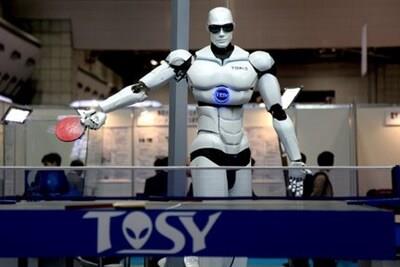
Chung-Ang University Researchers Develop Self-Powered Tactile Sensors For Robotics And Wearables
The team conducted a comprehensive review of manufacturing strategies for piezoelectric and triboelectric tactile sensors, focusing on techniques to enhance sensitivity, flexibility, and self-powering capabilities. The study examined various material properties, fabrication processes, and device designs to overcome challenges, such as brittleness in piezoelectric materials and environmental sensitivity in triboelectric sensors. Prof. Ryu said, "These strategies aimed to enable the development of high-performance sensors for applications in robotics, wearable devices, and healthcare systems."
For piezoelectric sensors, the researchers highlighted the importance of increasing the piezoelectric constant through methods, such as doping, crystallinity control, and composite material integration. Notable advancements include using lead-free ceramics and polymer blends to create flexible, environmentally friendly sensors suitable for dynamic applications. The integration of 3D printing and solvent-based crystallization techniques was also found to significantly improve the sensitivity and adaptability of these sensors.
The triboelectric sensors were enhanced through surface modification techniques, such as plasma treatments, microstructuring, and dielectric constant optimization. These strategies increased charge transfer efficiency and enabled the development of durable, high-output sensors. The researchers also demonstrated the effectiveness of hybrid materials and nanostructures in boosting triboelectric performance while maintaining flexibility and environmental resilience.
Interestingly, this study is among the first to provide a holistic overview of manufacturing strategies for both piezoelectric and triboelectric tactile sensors, emphasizing their complementary strengths. The findings reveal that a combination of innovative material engineering and advanced fabrication techniques is essential for creating sensors capable of multi-modal sensing and real-time interaction. This interdisciplinary approach promises to expand the application scope of tactile sensors across industries.
The study also underscores the potential for integrating artificial intelligence with tactile sensors for advanced data processing and multi-stimuli detection. Artificial intelligence (AI)-driven analysis of tactile inputs, such as texture and pressure recognition, can significantly enhance the accuracy and functionality of these devices. Such integrations pave the way for next-generation sensors that mimic human sensory capabilities while achieving higher operational efficiency.
Summarizing the broader implications of their work, Prof. Ryu concludes, "It is anticipated that AI-based multi-sensory sensors will make innovative contributions to such advancements in various fields." This study sets the stage for the development of intelligent systems that seamlessly integrate with human needs, from healthcare monitoring to robotic interfaces.
Reference
Title of original paper: Manufacturing strategies for highly sensitive and self-powered piezoelectric and triboelectric tactile sensors
Journal: International Journal of Extreme Manufacturing
DOI: 10.1088/2631-7990/ad88be
About Chung-Ang University
Website:
Media Contact:
Sungki Shin
02-820-6614
[email protected]
SOURCE Chung-Ang University

Legal Disclaimer:
MENAFN provides the
information “as is” without warranty of any kind. We do not accept
any responsibility or liability for the accuracy, content, images,
videos, licenses, completeness, legality, or reliability of the information
contained in this article. If you have any complaints or copyright
issues related to this article, kindly contact the provider above.

















Comments
No comment